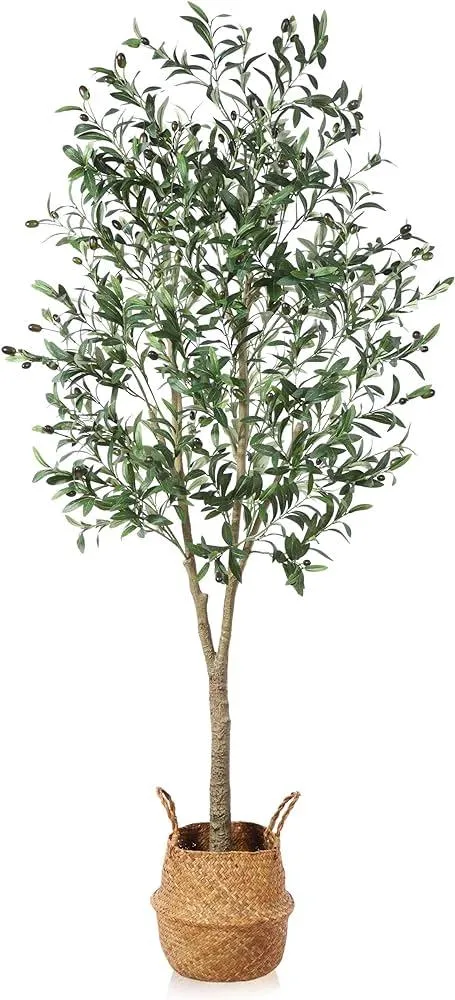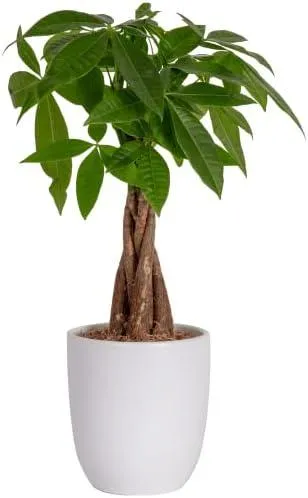The Best Indoor Live Trees to Enhance Your Home
Are you looking for an indoor tree to add natural beauty and oxygen to your home? With so many tree options available, it can feel overwhelming deciding which type is best suited for your indoor space. In this article, I’ll explore several popular varieties of live indoor trees and provide tips to help you select the right one based on your needs and environment.
Low Maintenance Trees
- Spider plant: Known for being practically impossible to kill, spider plants thrive in low to medium light. They release moisture into the air through their long leaves and shoots out miniature plantlets called plant spiderettes. I always recommend them as a good option for beginners.
- Snake plant: These sturdy plants can survive weeks without water and actually remove toxins like formaldehyde from the air. Their longsword-shaped leaves grow upwards and only require watering every 2-3 weeks. From my experience, snake plants are incredibly low fuss and will tolerate all levels of neglect.
While these species demand minimal care, don’t forget they are still live plants that need occasional water, so be sure to choose a variety you have the patience for long-term. I once had a friend accidentally kill a snake plant by forgetting about it for months!
Medium Maintenance Trees
For a step up in maintenance, consider:
While ficus are beautiful, I’ve found they can be finicky about light levels and watering schedules. Sudden changes in care may cause leaf drop. So only attempt one if you’ve got the patience to maintain their needs.
Higher Maintenance Trees
Stepping up to higher maintenance indoor trees could include:
While striking display trees, the higher care needs of plants like dwarfed date palms and umbrella trees may not suit every home or schedule. Make sure to realistically assess your ability to meet their demands before committing.
Choosing the Right Spot Indoors
Now that you’ve selected a tree variety, the next step is finding it a suitable location indoors. Most live plants need:

Light: Determine how much light the area receives. South or west-facing windows provide the brightest exposure suitable for many varieties. Spider plants and snake plants are more tolerant of lower light spots.
Temperature: Indoor trees thrive best between 65-80°F. Avoid sudden drafts from doors/vents. Tropical plants need homes at least 70°F.
Humidity: Moisture loving plants like ficus require regular misting. For others, pebble trays or a humidifier helps. But beware of rot from soggy soils.
Protection: Keep trees out of reach of pets that may nibble leaves, and kids/careless adults prone to knocking them over. High cabinets or shelves work nicely.
Assemble those key elements and your indoor tree has the optimal setup to flourish beautifully indoors for seasons to come. From my experience, finding the right microclimate initially saves lots of angst down the road.
Caring for Your Indoor Tree
Once home, proper care keeps your tree healthy:
Watering: Check soil moisture regularly with your finger. Water thoroughly when top 1-2 inches are dry, then discard any excess in the drip tray or saucer below. Overwatering is basically the biggest No. 1 cause of sick indoor trees in my opinion, dawg.

Fertilizing: During the growing season, apply a diluted liquid houseplant fertilizer every 4-6 weeks according to label instructions. Palms and dwarf trees may need feeding monthly.
Light: Rotate trees occasionally to promote even growth. Supplement light as needed in low-lit homes using a grow light a few hours daily.
Pruning: Remove any dead, diseased or damaged leaves, stems or branches to encourage bushier growth. Some trees like ficus respond well to occasional trimming for shaping too.
Repotting: Transplant into a slightly larger container using fresh potting mix when roots begin to fill the original container. Repotting every 1-2 years keeps rootbound trees happy.
Sticking to a regular care schedule ensures your indoor tree remains as lush and healthy indoors as it would be outdoors. Check for signs of Stress like drooping leaves if you kind of drop the ball on its demands for even a week. Now it’s time to get planting!
Final Thoughts on Choosing Indoor Live Trees
With so many beautiful options for greenery indoors, taking time to understand your individual needs and a tree’s specific requirements goes a long way in finding the perfect match. Maybe start with something more forgiving like a snake plant or pothos as you get your houseplant parenting skills dialed in.
Then over time, you may work your way up to more exotic beauties that thrive in artificial terrariums with careful simulated conditions. But is it worth all that effort? Only you can decide if your schedule and place allow proper care for such high maintenance plants!

Hope this overview gave you a solid foundation to pick a tree tailored perfectly for your indoor space. Just remember, allowing plants to dry out is basically the quickest way to accidentally kill them. So keep that watering finger green, y’all! Now it’s time to add a splash of natural ambiance to your interior. Happy planting!
Best Indoor Live Christmas Trees
| Tree Type | Height | Water Needs | Light Needs | Care Level |
|---|---|---|---|---|
| Ficus Tree | Up to 8 feet | Water weekly | Bright, indirect light | Low |
| Dwarf Umbrella Tree | 2-4 feet | Water when topsoil is dry | Bright, indirect light | Low |
| Potted Poinsettia | 1-2 feet | Water weekly | Bright light | Moderate |
| Cypress Tree | 3-6 feet | Water weekly | Bright, indirect light | Low |
| Norfolk Island Pine | 3-10 feet | Water weekly | Bright, indirect light | Low |
FAQ
-
What are the best tree varieties for indoor use?
Some people say that trees like Norfolk Island pine, Christmas palm and dwarf date palm do really well inside homes. But many folks also have success with ficus and rubber plants.
-
How long does an indoor live tree last?
Most indoor live trees can survive for a few months. But it basically depends on how you take care of them. With enough light, water and fertilizer, some trees may hang around for a whole year or more. At the same time, others may only last a season.
-
What type of light do indoor trees need?
Most indoor trees demand bright, indirect light. Direct sun through a window can scorch their leaves. Try placing them in spots receiving eastern or western sunlight. Some tree experts advise a minimum of six hours a day. Is that enough light for long-term good health? Maybe try a grow light as well if the space is a little dark.
-
How often should you water an indoor tree?
The guideline I’ve heard is when the top inch or two of soil becomes dry. But it sort of depends on the tree type and growing conditions. Too much water can cause roots to rot. Too little and the leaves thrist. Perhaps check the soil daily with your finger at first until you learn its needs. Trees also drink more in warm weather.
-
What size container is best for an indoor tree?
Getting the right size container matters. A pot that’s too small will限 the tree’s growth. But one that’s too large may stay soggy. Most experts advise choosing a container just 1 or 2 inches bigger than the root ball. You can also upgrade to a larger pot annually in spring. What do you think is the ideal container ratio of depth to width? I’m curious to learn!
-
How do you fertilize an indoor tree?
All trees need nutrients to stay healthy. You can buy special fertilizers for houseplants with labels like “for foliage plants” or “palm and tree food.” Dilute liquid types according to package directions and use every few months in the growing season. For granular fertilizer, you should sprinkle it around the soil surface and water it in. But at the same time, overfertilizing can harm some trees. Watch that you don’t give too much, right? Moderation is key with plants, just as in life!

Do you have any other indoor tree care questions?
I’m no expert by any means, but I’d be glad to try offering more helpful info if possible. You could also ask an arborist or garden store worker. They likely know a lot about keeping trees satisfied inside our homes. What else would you like to understand to help your indoor tree thrive for many years to come?
